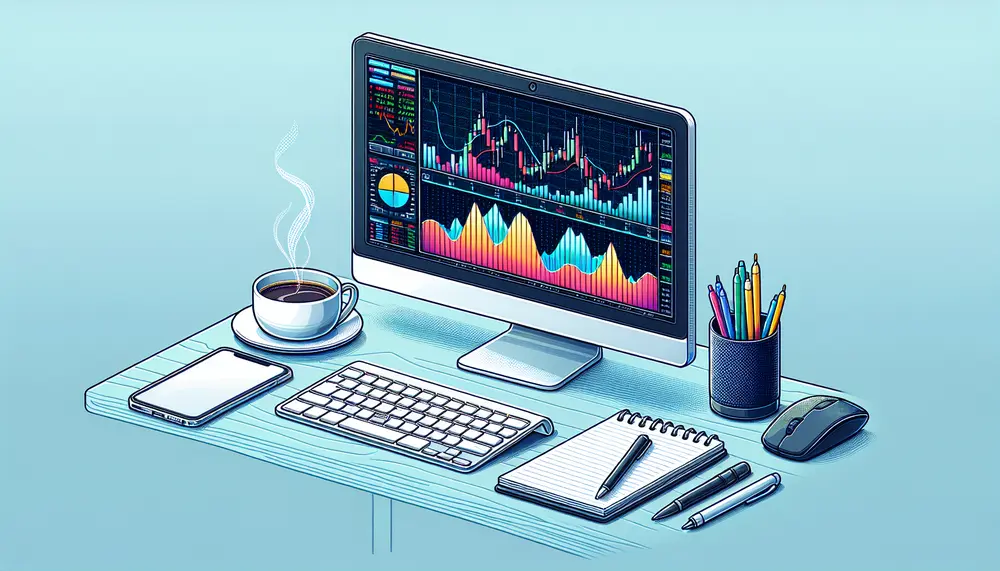Accumulation
Accumulation
Understanding Accumulation in Trading
In trading, Accumulation is an essential concept you'll encounter. Accumulation refers to the phase when traders and investors are purchasing or accumulating shares of a particular security over time. This buying action is often done when prices are low.
Why is Accumulation Important in Trading?
Accumulation is a strategic move demonstrating traders' belief that the future price of a security will rise. It is essential for establishing a robust trading setup, building a strong position in the market. Understanding accumulation allows traders to grasp a deeper insight into the market's inner workings and anticipate future price movements effectively.
Market Trends and Accumulation
Traders often use accumulation as a signal to identify the starting point of an upward market trend. This is because accumulation periods often precede price surges. Spotting accumulation patterns early can yield significant trading benefits.
Recognizing Accumulation in Trading Charts
In trading charts, accumulation often appears as a period of relatively flat prices, followed by a steady rise. This pattern is indicative of a strong buying pressure underpinning the market, leading to a potential uptrend. Technical indicators like the Accumulation/Distribution Line (A/D Line) can also help traders identify accumulation periods.
Accumulation vs. Distribution in Trading
While accumulation refers to a period of buying, its counterpart is distribution, a phase when investors are selling or distributing their holdings. Recognizing the shift from accumulation to distribution can be key in determining when to enter or exit a market position.
Steps to Leverage Accumulation in Trading
To use accumulation for strategic advantage in trading, it's important to monitor market trends and chart patterns vigilantly. Applying technical analysis tools can help identify accumulation periods and guide decision-making in trading.
Blog Posts with the term: Accumulation

Volume Analysis is an essential tool for investors in the financial markets as it provides insights into market trends, price reversals, and market vitality. By correlating volume data with price movements, traders can make more informed and potentially profitable trading...

Cryptocurrency trading involves speculating on price movements of digital currencies that exist encrypted online and can be traded via exchanges or through Contracts for Difference (CFDs). It's important to choose the right exchange, set up a secure account, manage your...

Bitcoin trading analysis involves understanding market behavior and using data like transaction histories, price charts, and volumes to predict price movements through technical or fundamental analysis. Technical analysis focuses on patterns in past data to forecast future prices, while fundamental...

This article discusses the difference between investing and trading in the financial markets. It explains that investing is a long-term strategy focused on gradual wealth accumulation, while trading is a short-term approach aimed at profiting from price fluctuations. The article...

Understanding market cycles is crucial for traders and investors as it helps predict market movements. Market cycles consist of four phases: accumulation, markup, distribution, and markdown, and by analyzing these stages, traders can make informed decisions and potentially maximize their...

Yield App is a digital finance platform that combines traditional banking with decentralized finance (DeFi), allowing users to earn interest on cryptocurrency holdings through an accessible, mobile-first application. It offers high-yield accounts, prioritizes security and user experience, and provides various...

The article provides a comprehensive guide to trading cryptocurrencies on Binance, highlighting the platform's extensive tools and features for both beginners and experienced traders. It covers setting up an account, funding it with fiat or cryptocurrency, utilizing various trading markets...

Crypto trading has gained popularity in recent years, but tracking trades can be challenging for beginners. A crypto trading journal is a powerful tool that records all trade details and provides insights to refine strategies; it's essential for anyone serious...

Spot trading in cryptocurrency involves buying or selling assets at the current market price, offering simplicity and immediate ownership without leverage risks. A solid spot trading strategy requires clear goals, diversification, risk management techniques, continuous education, and research to maintain...

Crypto trading strategies encompass a range of approaches from short-term scalp trades to long-term holds, relying on market indicators and risk management techniques like stop-loss orders for informed decision-making. Diversification across assets and strategies is essential in managing risks and...

Cryptocurrency trading involves understanding blockchain technology, the difference between fiat and digital currencies, market volatility, and various trade types. A successful strategy requires setting clear goals, interpreting market indicators, managing risks with stop-loss orders and diversification, and continuous learning to...

Crypto trading requires understanding the decentralized nature of cryptocurrencies, learning market terminology and tools like orders and stop-losses, choosing a secure wallet and platform, and selecting digital currencies that align with one's financial goals. A successful strategy also involves picking...

Altcoin trading involves buying and selling digital assets other than Bitcoin to profit from market price changes, leveraging supply and demand principles. Altcoins differ from Bitcoin in their unique blockchains, consensus mechanisms like proof-of-stake (PoS), faster transaction speeds, functionalities such...

Nexo is a digital finance platform that offers crypto-backed loans and high-yield interest accounts, blending traditional finance with blockchain technology to enhance financial freedom. It provides secure asset management, regulatory compliance, and flexible loan terms without traditional credit checks, aiming...


